Recent Articles
Popular Makes
Body Types
2018 Chevrolet Tahoe vs. 2018 Chevrolet Suburban: Which Is for You?
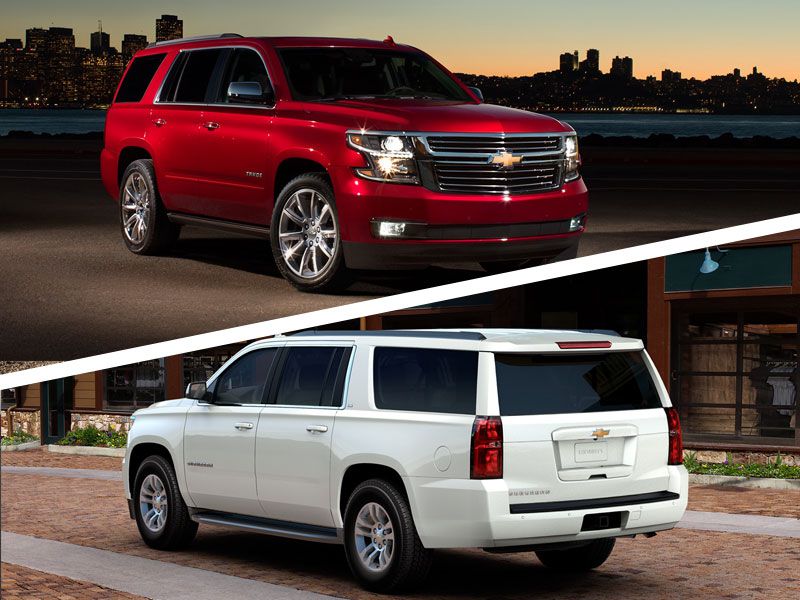
2018 Chevrolet Tahoe and Suburban exterior ・ Photo by General Motors
The 2018 Chevrolet Tahoe and 2018 Chevrolet Suburban are two full-size SUVs that are big on passenger space, cargo capacity and towing. They’re similar but they’re not exactly the same, with key differences between the two that make each more appealing to a different customer.
Let’s take a closer look at the 2018 Chevrolet Tahoe and 2018 Chevrolet Suburban in a head-to-head comparison and see which of these full-size SUVs is right for your needs.
Pricing and Trims
Since these two SUVs are from Chevrolet, there are a lot of similarities, starting with the trim range. Both are available in LS, LT and Premier trims, with a choice of rear-wheel or four-wheel drive and increasing levels of luxury as you move upward through the lineup. The difference comes in pricing.
The Tahoe is priced from $48,795 for the base LS up to $63,495 for the top Premier. The Suburban is priced higher at every trim level with a base price of $51,495 for the LS up to $66,195 for the Premier. If you need a full-size SUV and need to stay within a tighter budget, then the Tahoe is a better choice.
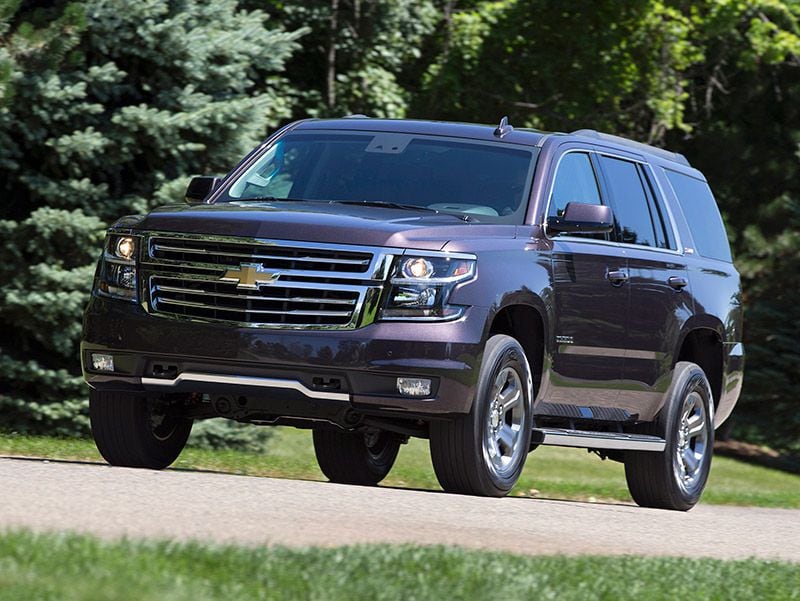
Photo by General Motors
Safety
Neither the Suburban nor Tahoe has been crash-tested by the Insurance Institute for Highway Safety, but they have both been tested by the National Highway Traffic Safety Administration. Both received an overall 4-star rating with a 3-star rating for rollover risk, which isn’t surprising given the size of these vehicles. The Tahoe comes out ahead in the frontal crash test with a 5-star rating versus a 4-star rating for the Suburban.
Both offer a wide range of standard and advanced safety features with more availability on higher trim levels. The difference between these two comes down to the frontal crash test where the Tahoe gets a slight edge.
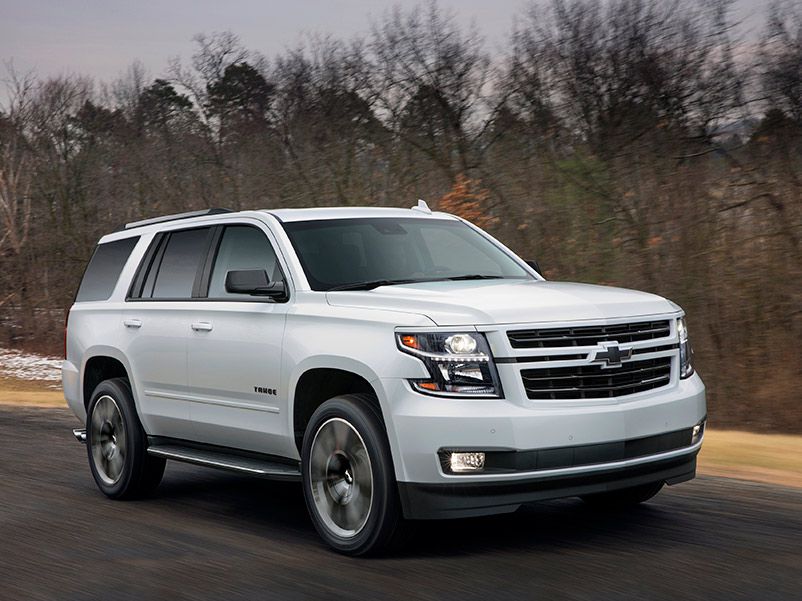
Photo by General Motors
Seating
These full-size SUVs are ideal for large families offering seating for eight, with optional seating for up to nine passengers with an available first-row bench seat for three. It's important to note that this only is an option on the base trim (and this nine-passenger configuration is rare and could be difficult to find in dealerships), so those who want the mid-range LT or luxurious Premier are limited to seating for eight.
Although they’re both large vehicles, if passengers are your priority, then the Suburban offers more room than the Tahoe. First-row and second-row passengers won’t notice a big difference, but those in the third row fare much better in the Suburban. The Tahoe offers 38.10 inches of headroom and 24.8 inches of legroom, while the Suburban offers 38.50 inches of headroom and 34.5 inches of legroom.
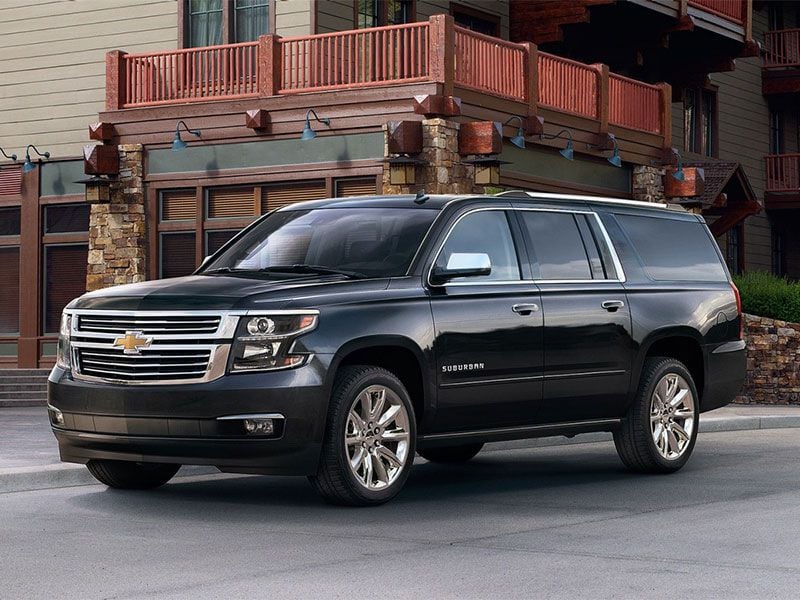
Photo by General Motors
Cargo Capacity
There’s ample room for cargo in both of these SUVs, even with a full load of passengers. The Tahoe offers 15.3 cubic feet behind the third row, 51.70 cubic feet behind the second row and 94.7 cubic feet behind the first row. There’s also a long load floor with 79.90 inches behind the front seats.
The Suburban counters with 39.30 inches behind the third row, 76.60 inches behind the second row and 121.70 inches behind the first row, along with a cargo floor that is 100.30 inches long. The Suburban can hold items 20 inches longer than what the Tahoe can manage, and it offers more than double the cargo room behind the third row.
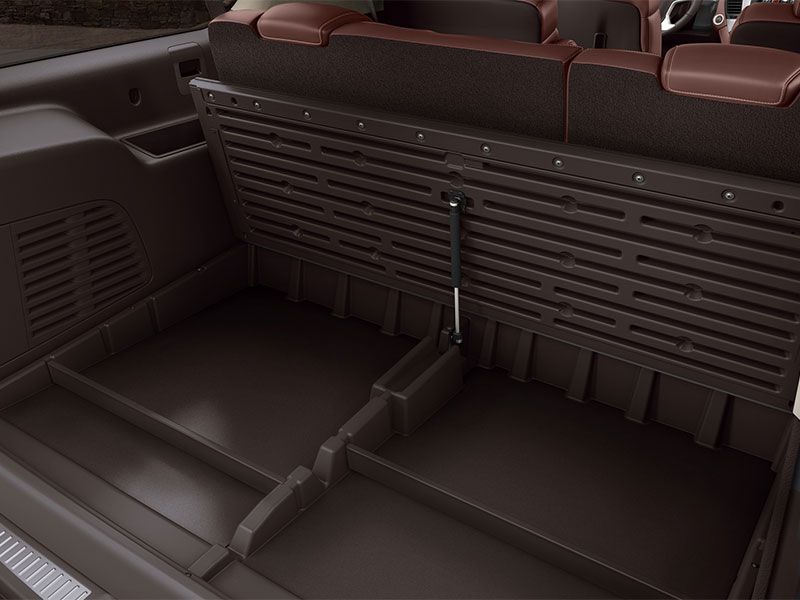
Photo by General Motors
Towing
The Tahoe and Suburban both are great choices for those who plan on towing. The Tahoe with the smaller 5.3-liter engine can tow up to 8,600 pounds in rear-wheel drive models or 8,400 pounds in four-wheel drive models. Go for the larger 6.2-liter engine and the numbers fall to 8,400 pounds with rear-wheel drive or 8,100 pounds with four-wheel drive.
The Suburban doesn’t offer quite as much towing capability. It can manage up to 8,300 pounds with rear-wheel drive or 8,000 pounds with four-wheel drive, making Tahoe the clear winner.
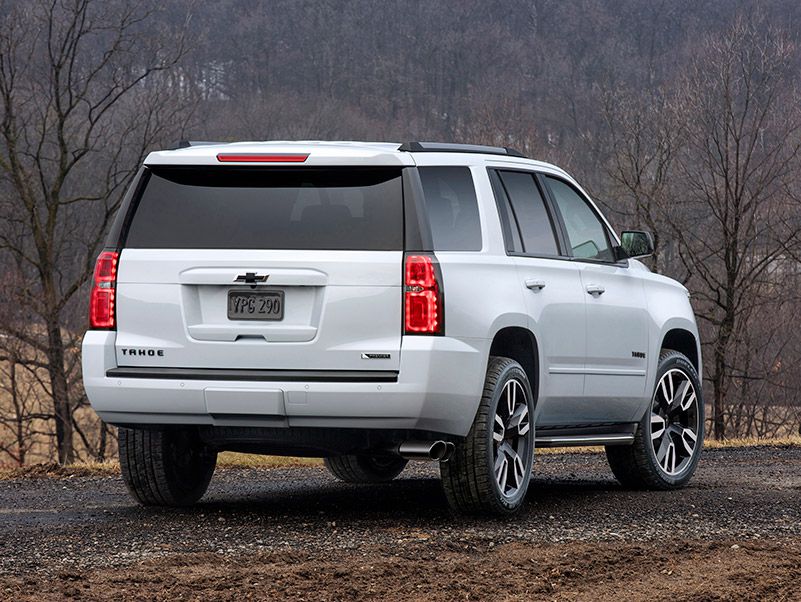
Photo by General Motors
Performance
The Tahoe offers two engine choices, starting with a 5.3-liter V8 with 355 hp and 383 lb-ft of torque paired to a 6-speed automatic transmission. There’s also a 6.2-liter V8 with 420 hp and 460 lb-ft of torque paired to a 10-speed automatic transmission. On the Suburban, your only engine choice is the same 5.3-liter V8 found in the Tahoe.
By offering two engine choices, the Tahoe keeps its appeal for those who need a big vehicle and want a more aggressive drive. The Suburban doesn’t offer that option and with its larger size, it won’t feel as powerful as the Tahoe with the same engine.
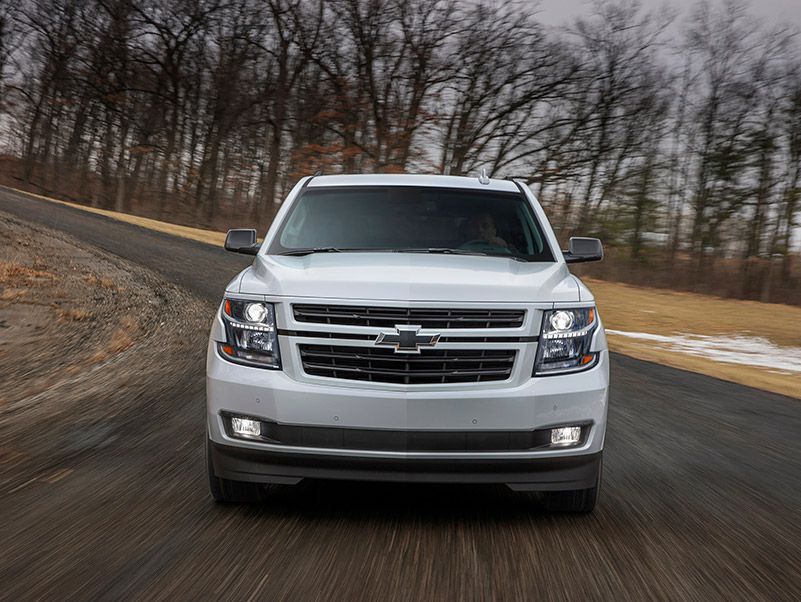
Photo by General Motors
Fuel Efficiency
The Tahoe gets an EPA-estimated 16 mpg in the city, 23 mpg on the highway, and 19 mpg combined with the 5.3-liter and rear-wheel drive, or 14 mpg in the city, 23 mpg on the highway, and 17 mpg combined with the 6.2-liter. Four-wheel drive numbers drop to 16 mpg in the city, 22 mpg on the highway, and 18 mpg combined with the 5.3-liter engine, and 14 mpg in the city, 22 mpg on the highway, and 17 mpg combined with the 6.2-liter.
The Suburban with its 5.3-liter engine matches fuel economy in rear-wheel drive models, but gets 15 mpg in the city, 22 mpg on the highway and 18 mpg combined with four-wheel drive.
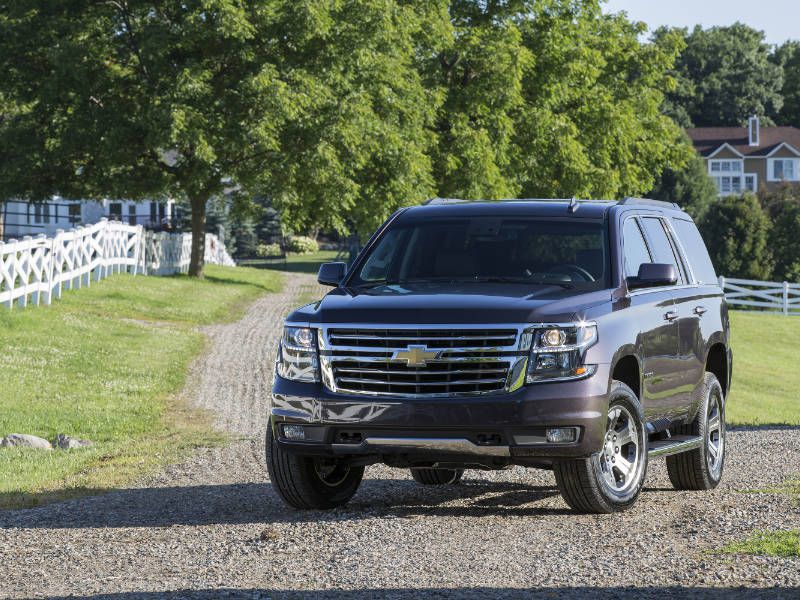
Photo by Chevrolet
Exterior Dimensions
You buy a full-size SUV because you need lots of room for people and cargo, but there are challenges to buying something big. If you live in the country where roads are wide and parking is plentiful, then the 224.3-inch long Suburban works out fine. If you live in the city or often find yourself driving in one, then it’s a challenge to navigate the roads and downright difficult finding a suitable place to park.
The Tahoe doesn’t offer the same cargo room, but still holds up to nine passengers and comes in at only 203.9 inches long. The Tahoe offers the perks of a full-size SUV with a more manageable footprint.
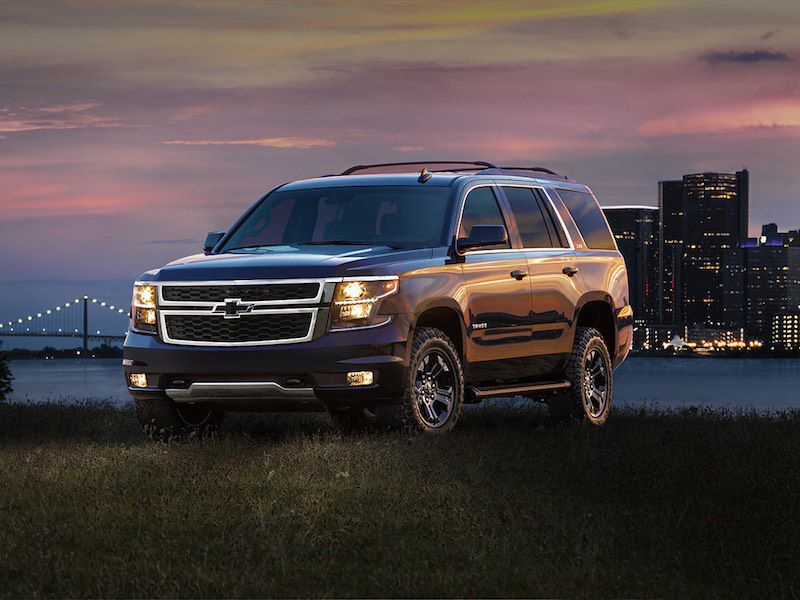
Photo by Chevrolet
Infotainment
The Tahoe and Suburban feature standard Chevrolet MyLink with an 8-inch touchscreen, Bluetooth streaming audio, Apple CarPlay, Android Auto and USB ports, along with a 6-speaker audio system. The LT trim gets an upgrade that includes a 9-speaker Bose audio system, and the Premier goes a step further with a 10-speaker Bose Centerpoint surround sound system. Crucial for families, there’s also a rear-seat entertainment system available on the LT and Premier trims only.
What differentiates the two is how much it costs to get that rear seat entertainment. It’s part of a package on both vehicles and depending on the trim, runs $2,435 to $2,930 on the Tahoe and $2,535 to $3,030 on the Suburban.
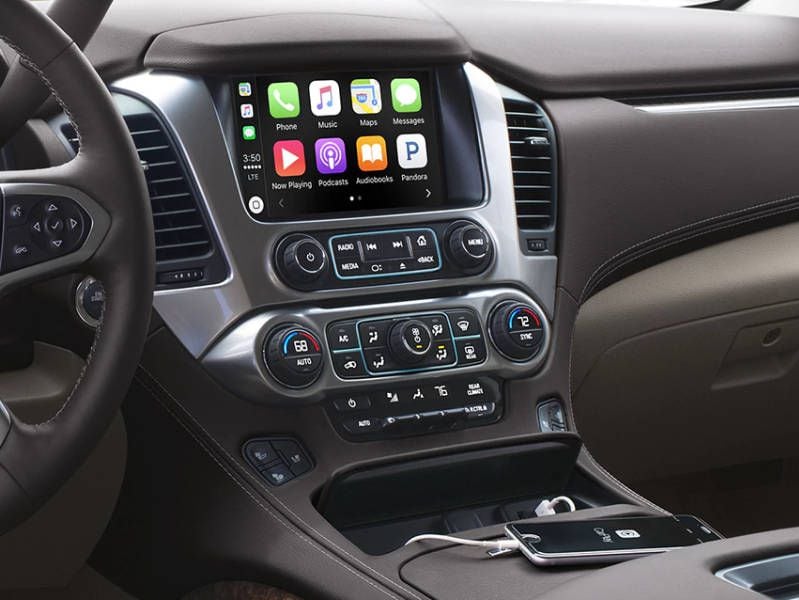
Photo by General Motors
Verdict
This is a close race, but the Tahoe comes out ahead despite its smaller size. It’s a capable full-size SUV with good cargo and passenger room along with solid towing. It’s priced more affordably than the Suburban, and also has more affordable options as you move through the trim range. It also comes out ahead on fuel economy, even if you go with the more powerful engine.
Where the Suburban shines is in its sheer size. If you want more room for third-row passengers and need a cavernous interior for cargo, then the Suburban comes out ahead. Otherwise, the Tahoe is the better overall choice.

Photo by General Motors